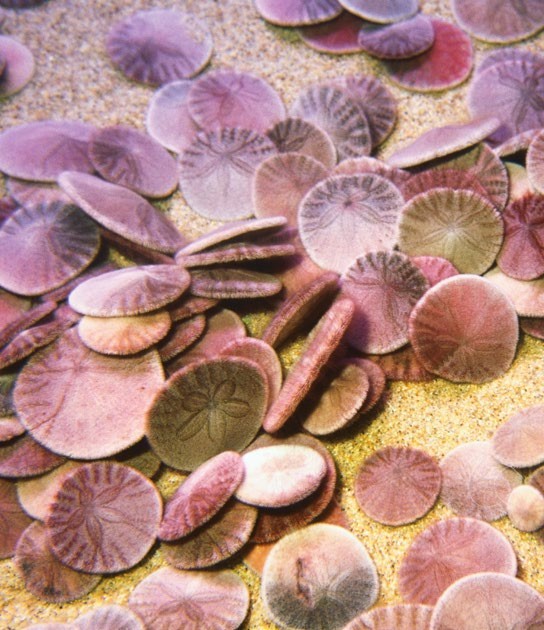5 and dollars are small marine invertebrates that live on the seafloor. The 11 sand dollar species are disc-shaped and have an average diameter between seven and ten centimetres. Most of the time these animals are submerged underwater, but they sometimes become dislodged from the seabed and wash up on beaches. Live sand dollars should be returned to the water or they will dry out and die. They can be identified by their red or purple velvetlike coats and star-shaped lines on their surface. Hard, solid, white sand dollars are just the remains of the creature. Their soft tissue is gone and all that remains is their calcium carbonate exoskeleton. The skeleton’s hard, circular appearance resembles large coins – hence the name sand dollar.
When they are alive, sand dollars move by grabbing the seabed with hair-like extensions on their feet. Having just one disc-shaped foot and no arms, legs or tail makes mobility restricted. Predators such as crabs and medium-sized fish have a fairly easy time catching this prey once spotted. To deter them, sand dollars have small stinging cells across their bodies. Sand dollars themselves aren’t picky eaters, as they have to rely significantly on the food that floats their way. Their diet usually consists of phytoplankton, algae and the larvae of crustaceans and fish. To consume these, they use jaws full of toothlike protrusions that grind their food for around 15 minutes before it’s edible.

A group of sand dollars is called a ‘bank’
© Alamy / Getty